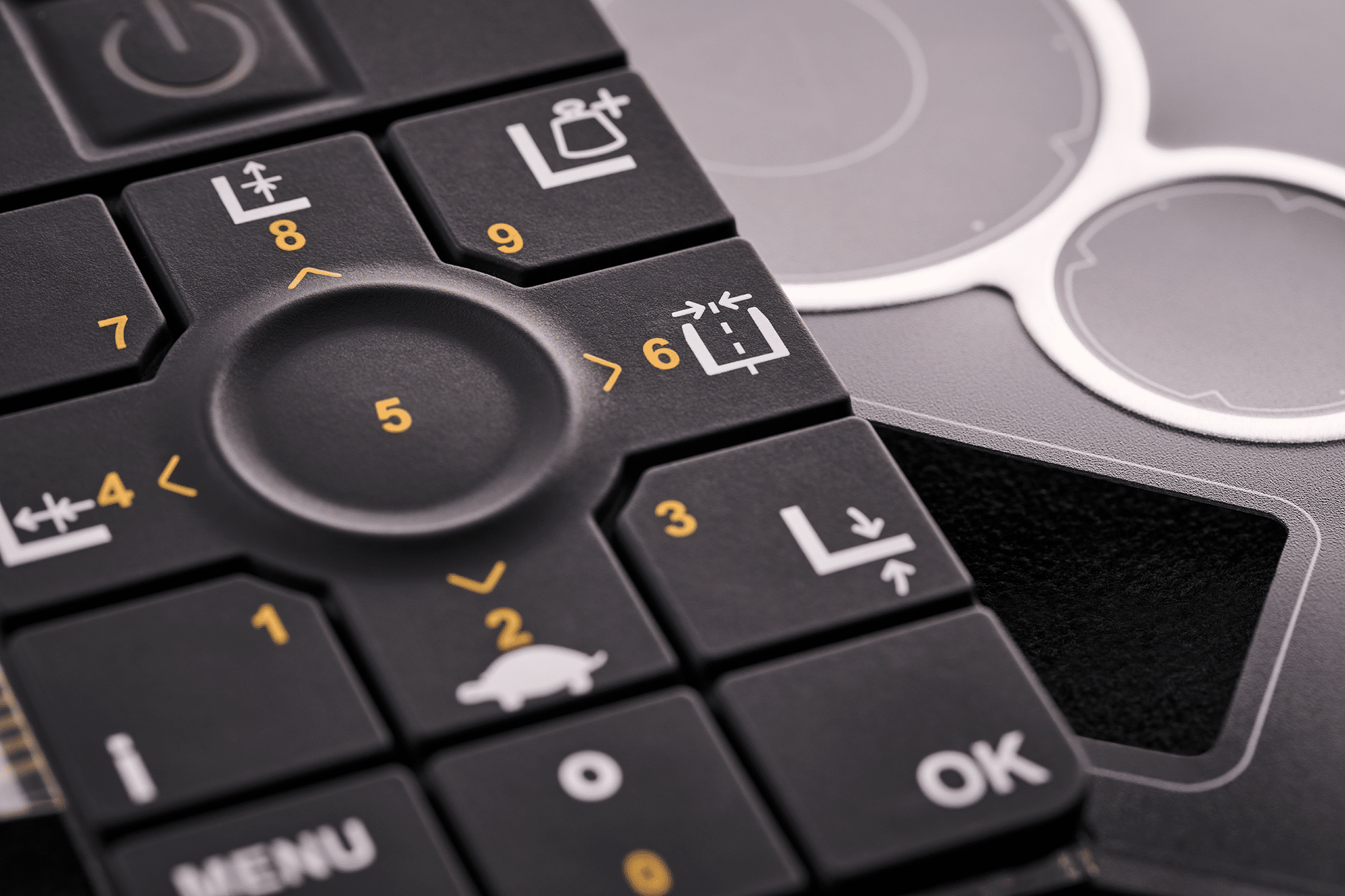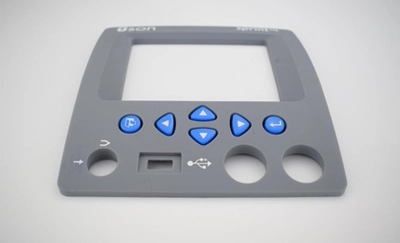Exploring membrane switch applications in harsh environments
The Manufacturing Refine Behind Membrane Switch Over: What You Need to Know
The production process behind membrane layer switches combines mindful design, product selection, and quality assurance. It begins with recognizing the complexities of membrane layer switch style and progresses with various stages, consisting of material options and printing techniques. Each stage plays a necessary function in ensuring capability and sturdiness. The complexities of layer building and construction and the rigorous testing criteria may expose understandings that are not instantly evident. What exists past these foundational elements?
Comprehending Membrane Layer Switch Over Design
Membrane layer buttons might show up simple at first glimpse, their style includes complex factors to consider that assure capability and durability. The design process begins with a comprehensive understanding of individual demands, including the interface's intended application and environmental factors. Functional designs is an essential aspect, as the layout should facilitate ease of use while ensuring that responsive responses fulfills customer expectations.Moreover, the layering of elements, such as graphic overlays, adhesive layers, and conductive traces, must be specifically crafted. membrane switch. This split setup not only affects the button's responsiveness yet also impacts its durability. Interest is offered to the securing techniques utilized to safeguard versus moisture and dust, which could compromise performance. Additionally, style factors to consider include visual appeals, where shade systems and visual clarity boost individual experience. Eventually, the design of membrane layer switches equilibriums performance, user experience, and durability, making certain that they satisfy the demands of numerous applications successfully
Materials Utilized in Membrane Switch Over Manufacturing
When picking materials for membrane layer switch production, it is important to ponder both performance and durability. The main materials include polyester and polycarbonate movies, which offer adaptability and stamina. These films are usually coated with glue to guarantee correct bonding to substrates. Conductive inks, normally composed of silver or carbon, are vital for developing electrical links within the button, allowing for trusted operation.Additionally, a protective layer, such as a difficult layer, is frequently applied to boost scrape resistance and longevity. The option of backing product, such as acrylic or foam, can considerably affect the button's responsive feel and general customer experience. Various environmental aspects, including temperature level and humidity, ought to direct product option to assure peak efficiency in specific applications. Ultimately, the best combination of materials adds to the membrane layer button's performance and life-span, making educated selections crucial for manufacturers.
The Printing Process: Creating Graphics and Text
The printing process in membrane layer button production plays a substantial function in creating top notch graphics and text. Numerous visuals layout strategies are used to ensure aesthetic charm and functionality, while cautious ink choice methods are vital for toughness and performance. Recognizing these elements is fundamental for attaining ideal lead to membrane switch layout.
Graphic Style Techniques
Graphic style techniques play an important duty in the printing process of membrane buttons, as they define just how graphics and text will ultimately show up on the final item. Effective visuals style involves the calculated use shades, designs, and typefaces to enhance readability and aesthetic appeal. Designers commonly utilize vector graphics for scalability, making sure that images stay sharp at numerous sizes. In addition, attention to comparison and placement is important, as it affects user interaction and visual quality. The consolidation of branding components, such as logos, need to be taken care of with care to preserve brand name integrity. In general, thoughtful visuals layout techniques contribute substantially to the capability and beauty of membrane layer buttons, influencing user experience and product performance.
Ink Option Approaches
Selecting the suitable ink is necessary for attaining the desired visual quality and toughness in membrane layer button manufacturing. Various ink types are utilized, including solvent-based, water-based, and UV-curable inks. Each type uses distinctive features, such as resistance, flexibility, and adhesion to environmental factors. Solvent-based inks are frequently favored for their sturdiness and dynamic colors, while water-based inks are much more eco-friendly but might have constraints in attachment. UV-curable inks give quick curing and durable performance. Furthermore, color matching methods assure that the selected inks line up with layout specifications. Eventually, the option of ink should take into consideration aspects such as application method, substratum compatibility, and end-use demands to achieve exceptional cause membrane switch graphics and text.
Layer Construction and Setting Up

Product Option Refine
A mindful option of materials is important in the manufacturing process of membrane switches, as it directly influences functionality and sturdiness. The main materials utilized include polyester, polycarbonate, and different conductive inks. Polyester is typically preferred for its exceptional resistance to chemicals and abrasion, making it appropriate for extreme atmospheres. Polycarbonate, on the other hand, offers exceptional clarity and impact resistance, which is advantageous for applications requiring visibility and effectiveness. Conductive inks, commonly made up of silver or carbon, are crucial for producing reputable electrical pathways. In addition, the selection of sticky materials impacts the total stability of the switch - membrane switch. Evaluating factors such as ecological exposure, tactile responses, and visual requirements overviews makers in choosing the very best products for their certain applications
Layer Adhesion Strategies
Sticking layers in membrane button building is a vital procedure that ensures functionality and long life. Various attachment methods are employed to protect perfect bonding in between layers, which usually include using adhesives, heat, and stress. Pressure-sensitive adhesives (PSAs) are typically made use of for their simplicity of application and prompt bonding abilities. In addition, thermal bonding methods can be used, where warm is made use of to activate glue residential properties, securing a solid bond. The selection of bond approach largely relies on the materials included and the details application requirements of the membrane layer button. Proper placement and consistent application of adhesives are necessary to protect against problems, safeguarding the button operates successfully throughout its desired lifespan.
High Quality Control Actions
Guaranteeing quality assurance throughout the layer construction and assembly of membrane buttons is crucial for maintaining performance and integrity. This procedure generally includes numerous critical steps, consisting of detailed inspections at each stage of production. Makers use innovative screening approaches, such as peel tests and adhesion analyses, to verify the integrity of layer bonds. Additionally, visual evaluations are carried out to determine any type of flaws in printing or material variances. Ecological conditions, such as temperature and humidity, are thoroughly kept track of to ensure optimal treating and adhesion. Routine calibration of devices helps maintain specific production requirements. By executing these high quality control measures, manufacturers can greatly reduce the threat of product failing, ensuring that the final membrane switches over meet the called for specs and client expectations.
Examining and Quality Assurance Steps

Innovations in Membrane Switch Technology
As innovations in modern technology remain to develop, membrane buttons are benefiting from cutting-edge developments that improve their capability and user experience. One remarkable development is the combination of capacitive touch modern technology, which permits even more receptive and user-friendly interface. This change not just boosts appearances however additionally decreases mechanical deterioration, expanding the lifespan of the switches.Additionally, improvements in visuals overlay products have brought about improved sturdiness and resistance to environmental elements such as wetness and UV light. These materials now supply improved clearness and illumination, further boosting the aesthetic appeal.Furthermore, the consolidation of wise modern technology is changing membrane layer switches over into interactive control board, enabling connection with IoT devices. This connectivity promotes a smooth individual experience, leading the method for applications in various sectors, from health care to customer electronics. Jointly, these advancements placement membrane layer changes as critical components in modern-day gadget style.
Frequently Asked Concerns
The length of time Does the Membrane Switch Manufacturing Refine Take?
The period of the membrane layer switch manufacturing process can differ substantially. Factors such as intricacy, materials used, and manufacturing quantity impact timelines, with common production ranging from find out this here a couple of days to numerous weeks for conclusion.
What Are the Typical Applications for Membrane Switches?
Membrane layer switches are generally utilized in numerous industries, including automotive controls, home devices, medical devices, and customer electronic go now devices (membrane switch). Their flexibility and durability make them ideal for applications calling for user-friendly user interfaces and reputable performance in varied settings
Can Membrane Changes Be Customized for Specific Needs?

What Is the Life-span of a Typical Membrane Layer Switch?
The life-span of a normal membrane switch varies, but normally, it varies from 1 to 5 million cycles. Elements such as use, environment, and worldly quality greatly influence sturdiness and general efficiency over time.

Are Membrane Switches Eco-friendly?
The environmental kindness of membrane changes differs. Some products utilized might not be recyclable, while others can be environment-friendly. The overall impact depends upon producing materials and techniques, requiring cautious consideration throughout choice and disposal. The production process behind membrane switches combines careful design, product choice, and high quality control. It starts with recognizing the ins and outs of membrane layer button design and proceeds via numerous stages, consisting of material selections and printing strategies. When choosing products for membrane layer switch production, it is vital to consider both performance and longevity. A mindful option of materials is essential in the manufacturing procedure of membrane buttons, as it straight affects capability and longevity. The selection of attachment technique mainly depends on the materials involved and the details application demands of the membrane button.